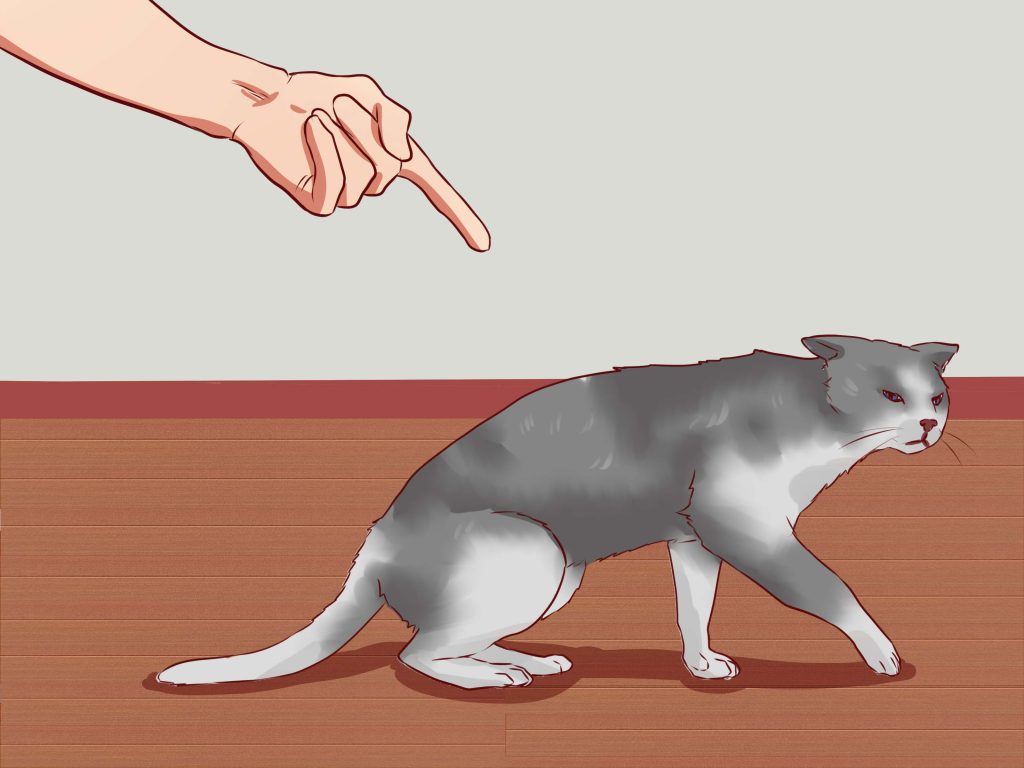Obedience Training in Cats: Demystifying the Idea that Cats Cannot Be Trained

Exploring the World of Cat Training
For many, the idea of obedience training in cats seems far-fetched. Common belief suggests that cats are independent creatures, resistant to formal training. However, this perception may be limiting, as research and anecdotal evidence reveal otherwise. Contrary to popular belief, cats can be trained to perform various tasks and respond to commands, enhancing their quality of life and the owner’s experience.
Training cats is not only possible but can also be beneficial for both feline and owner. Consider these vital points:
- Enhancement of Bond: Training fosters a closer relationship between you and your cat. When a cat learns to respond to cues or commands, it builds trust and strengthens the emotional connection between pet and owner, enabling shared moments of joy and understanding.
- Behavior Management: Effective training techniques can address common behavioral issues like scratching furniture or improper litter box use. By redirecting behaviors through training, owners can create a more harmonious living environment.
- Cognitive Stimulation: Training provides mental challenges that keep cats engaged. Cats are naturally curious creatures, and teaching them new tricks or commands stimulates their minds, preventing boredom and promoting overall well-being.
Despite the challenges, certain techniques have proven effective in training cats. Some common methods include:
- Clicker Training: This method involves using a clicking sound to mark the desired behavior, followed by a reward. The click helps cats associate the sound with positive outcomes, making it easier for them to learn new behaviors.
- Target Training: Teaching cats to follow a target, like a stick or a finger, can lead to impressive tricks such as jumping through hoops or other agility tasks. This technique not only trains their body but also enhances their focus and concentration.
- Problem-Solving Activities: Engaging in problem-solving games encourages natural hunting instincts through puzzle toys or hidden treats, offering both physical exercise and mental enrichment.
In Nigerian households, where cats are often viewed primarily as companions, the potential to teach them commands can significantly change perceptions. For instance, a cat that learns to respond to its name or perform simple tricks can provide not only entertainment but also a sense of pride for the owner. By embracing obedience training in cats, owners may discover a new realm of interaction that adds depth to their relationship with their pets, fostering greater harmony in their homes.
Ultimately, the journey of training a cat can be rewarding and fulfilling. It creates opportunities for bonding and enhances the overall quality of life for both the cat and its owner. As more Nigerian households consider the benefits of cat training, the perception of these beloved pets will evolve, highlighting their potential beyond mere companionship.

LEARN MORE: This related article may interest you
Understanding the Unique Learning Styles of Cats
The journey into obedience training in cats begins with recognizing that felines, while often perceived as aloof and solitary, possess remarkable learning capabilities. Unlike dogs, whose pack mentality encourages them to follow commands, cats are more self-driven and might require a tailored approach to engage their attention effectively. This distinct personality trait is crucial to shaping a training strategy that resonates with your cat’s natural instincts.
To train a cat successfully, it is essential to understand their unique learning styles. Cats are generally more responsive to positive reinforcement. This means recognizing and rewarding your cat’s good behavior with treats, praise, or playtime, rather than resorting to negative consequences. Here are some additional key points that highlight how to effectively navigate the training process:
- Timing is Critical: Cats learn best when the reward immediately follows the behavior. If you wait too long after a successful command, they may not associate the action with the reward.
- Short Training Sessions: Unlike dogs that may enjoy longer training periods, cats tend to lose interest quickly. Keeping training sessions brief—around five to ten minutes—can help maintain their focus and enthusiasm.
- Environment Matters: Create a distraction-free space for training. This may be especially important in lively Nigerian households where noises and other pets can divert your cat’s attention away from learning.
- Know Your Cat’s Motivators: Each cat has unique preferences. Some may respond best to food treats, while others might be motivated by play or affection. Identifying what drives your cat can enhance the efficacy of your training efforts.
Moreover, cultural perceptions surrounding cats in Nigeria often lead to the misconception that training is futile. However, numerous stories are emerging of Nigerian cat owners cultivating successful training habits and enjoying the benefits of a well-trained feline companion. Take, for instance, the story of a Nigerian family who taught their cat commands such as “sit” and “high-five.” What started as a fun activity became an opportunity for the family to bond with their pet, showcasing to others that cats, too, can be taught.The advent of social media has also made it easier for cat owners to share their training successes, fostering a community of like-minded individuals eager to learn and share their experiences. From basic obedience cues to complex tricks, the resurgence of interest in obedience training in cats demonstrates that these furry companions are more capable than previously believed.
As more Nigerian households embrace the idea of training their cats, the potential for enrichment, improved behavior, and a more rewarding relationship becomes evident. Recognizing that cats can learn and adapt allows owners to step into a new world of interaction, illustrating that dogs are not the only pets that can be trained.
Understanding the Fundamentals of Cat Training
When we think about obedience training, the common perception is often centered around dogs. However, the reality is that cats are not only trainable but can also excel in learning various commands and behaviors. This stems from their natural instincts and intelligence. Unlike dogs, who are pack animals and often look to their owners for leadership, cats are more independent; they require a different approach to training, making it essential to understand their unique learning styles.
The Importance of Positive Reinforcement
One of the most effective methods for training cats is positive reinforcement. This approach encourages desired behavior through rewards, such as treats or praise, rather than punishing undesirable actions. For instance, if you want your cat to learn to use a litter box or refrain from scratching furniture, rewarding them with a treat immediately after they engage in the desired behavior significantly increases the likelihood of them repeating it. Understandably, patience is crucial as cats may take longer to respond compared to dogs.
| Training Method | Key Characteristics |
|---|---|
| Positive Reinforcement | Rewards that encourage good behavior |
| Clicker Training | A method that uses a click sound as a marker for correct behavior |
Short Training Sessions
To maintain a cat’s attention, keep training sessions short and engaging, ideally lasting about five minutes. This helps prevent boredom and frustration, ensuring the cat remains interested and responsive. Not only does this tactic apply to basic commands, but it can also foster enthusiasm for learning tricks or activities that enhance your bond with your feline friend.In conclusion, training cats effectively requires a thorough understanding of their behavior and learning techniques. Using methods like positive reinforcement, employing short sessions, and consistent practice can lead to a fulfilling experience—for both cat and owner—demonstrating that the myth of untrainable cats is simply not true. As you embark on this journey, be prepared to uncover the extraordinary potential that lies within your feline companion.
RECOMMENDED: Check out this similar article
Techniques for Successful Obedience Training in Cats
Once you grasp the unique learning styles of cats, the next step in obedience training in cats involves employing effective techniques that resonate with their independent nature. Some methods stand out, acting as bridges to foster communication and understanding between you and your feline companion. By integrating these techniques, you can create a rewarding training experience that not only reinforces good behavior but also strengthens your bond.
Clicker Training has emerged as a popular and effective method among cat owners. This technique involves using a small device that produces a clicking sound when pressed. The click serves as a precise marker to indicate that your cat has executed the desired behavior. Coupled with a reward, this method promotes a clear understanding of what is expected. Studies suggest that animals, including cats, can learn best when they receive immediate feedback, making clicker training an ideal approach for those seeking to affirm learning swiftly.
Leveraging the Power of Play can also lead to successful training sessions. Incorporating interactive toys, such as feather wands or laser pointers, can engage your cat and encourage them to perform commands in a playful context. For example, ask your cat to “come” and reward them with a short play session. This technique not only reinforces training but also taps into the natural hunting instincts of cats, giving them a chance to express their playful side.
Another key element to consider is shaping behavior. This method involves breaking down desired actions into smaller, manageable steps. For instance, if you aim to teach your cat to jump through a hoop, start by rewarding them for approaching the hoop, then for touching it, and eventually for jumping through it. This gradual progression helps prevent frustration, allowing your cat to associate the behavior with positive outcomes.
- Consistency is Key: Maintaining a routine is essential during training. Establishing a specific time and setting for training sessions reinforces expectations and helps your cat recognize when it’s time to learn.
- Patience and Understanding: The training journey is rarely linear. Be prepared for setbacks and celebrate small victories, recognizing that each cat learns at their own pace.
- Training Variability: Mixing up commands and techniques can keep the training process engaging. Introducing new commands prevents boredom and stimulates your cat’s cognitive abilities.
In the realm of Nigerian cat ownership, these training techniques can transform the misconception that cats cannot be trained into a testament of their adaptability. Families are increasingly sharing their training journeys on platforms like Instagram and TikTok, showcasing how simple commands can enhance their cats’ interaction with family members. From cats performing basic tricks to even participating in fun agility courses, social media highlights that each trained command reflects not only a learned behavior but also grows the mutual respect and understanding between owner and pet.
Moreover, with the rise in pet care workshops and training classes in urban areas like Lagos and Abuja, cat owners now have venues to learn and share training tips with fellow enthusiasts. The shared enthusiasm surrounding this endeavor demonstrates that beyond personal satisfaction, training also fosters community involvement and support.
As you engage in the journey of obedience training in cats, remember that the process is not simply about commands but also about enhancing the quality of life for both you and your cat. Investing time and effort into understanding and training your cat offers the benefit of companionship that goes beyond the typical pet dynamics often reflected in polarizing narratives.
SEE ALSO: Click here to read another article
Conclusion: Embracing the Possibilities of Obedience Training in Cats
In conclusion, the journey towards obedience training in cats unveils the remarkable potential of our feline friends to learn and adapt. Contrary to the long-held belief that cats are untrainable, the right understanding and techniques can transform the perception of cats as aloof and indifferent companions. With methods like clicker training, the incorporation of play, and shaping behavior, cat owners can foster a deeper connection with their pets while enhancing their behavior.
The advancements in awareness through social media platforms and community workshops have proven invaluable, providing platforms for owners to share their successes and challenges. As a result, cat training is not merely an individual pursuit but a growing movement in Nigeria—a testament to the evolving relationship between people and their pets. The enthusiasm within local networks fosters both support and knowledge exchange, empowering owners to engage in training that enriches both their lives and their cats’.
It is vital to approach the training process with consistency, patience, and an understanding of each cat’s unique needs. This not only sets realistic expectations but also cultivates an environment where cats feel secure and encouraged. As you embark on or continue this training journey, remember that every small victory is a step toward demystifying the notion of “cat training.” The potential for shared joy and companionship lies within your commitment to nurturing an intelligent and capable pet.
As you explore the many facets of obedience training in cats, you’re not just teaching commands; you’re building a relationship rooted in respect and mutual understanding that transcends traditional pet dynamics. Your journey reflects the vast possibilities awaiting within the bond you share with your feline companion, reaffirming that with dedication, determination, and a bit of creativity, training cats is indeed within reach.


